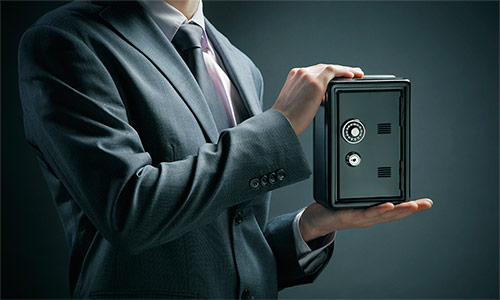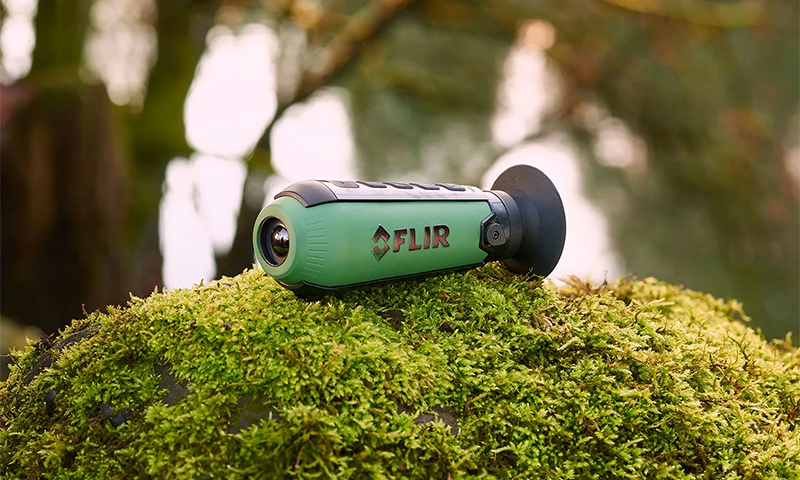Since the law allowed the population to use non-lethal means of self-defense, the ESD (electroshock devices) began to be sold almost in underground passages. In fact, such a weapon, although it does not require obtaining a license, is subject to mandatory certification, which means that it should be bought only in a specialized shop that can provide the necessary document. In addition, you should think in advance what kind of shocker will ensure your safety in a street conflict.
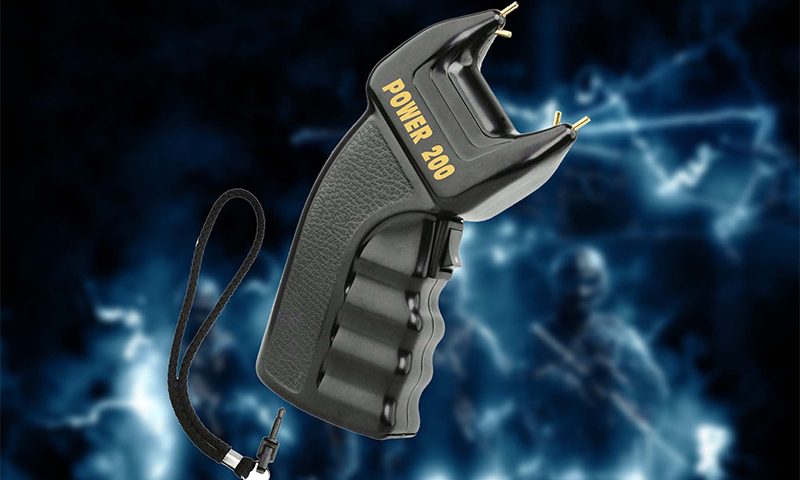
Content:
The best manufacturers of stun guns - which company to choose
Despite the abundance of brands offering "civilian" spark gaps, the lion's share of such devices are ineffective or even dangerous for the carrier.
Foreign brands that produce good ESAs (Taser, Police, Flashlight), alas, are also not available to us - the law only allows the use of devices manufactured according to GOST.
There are domestic producers:
- March Group;
- Thunder;
- SRI Steel;
- Oberon;
- ZAO NPO SM.
We made a review of their best models separately. Now it is more important to understand the peculiarities of the work of different shockers and find the right option for themselves.
The principle of operation and the device shocker

ESHU is a portable device, that is, the batteries here are placed directly in the case. When turned on, the voltage from them passes through cascade transducers, increasing it approximately ten thousand times, and is transmitted to the combat electrodes. There is a high-voltage arc, which also needs to act on the attacker.
Also in the contact models, you can see the second pair of control electrodes facing inward. They allow you to visually assess the performance of the device, and some even offer to use a spectacular discharge to “persuade” the enemy to disperse peacefully.
Shooting or distance ESAs have a slightly different principle of action. For their work, you need to use disposable cassettes - transport units, inside which the capsule with compressed air is placed.
When the "shot" BT at a good speed flies forward and digs into the enemy with sharp contacts, punching even a thick layer of clothing. Then everything happens as in a normal shocker: an electric shock hits the attacker.
Depending on the voltage applied and the duration of contact with the electrodes, a person can cause severe pain, temporary muscle paralysis, disorientation, and even loss of consciousness.
Types of stun guns
EShU contact action (K)
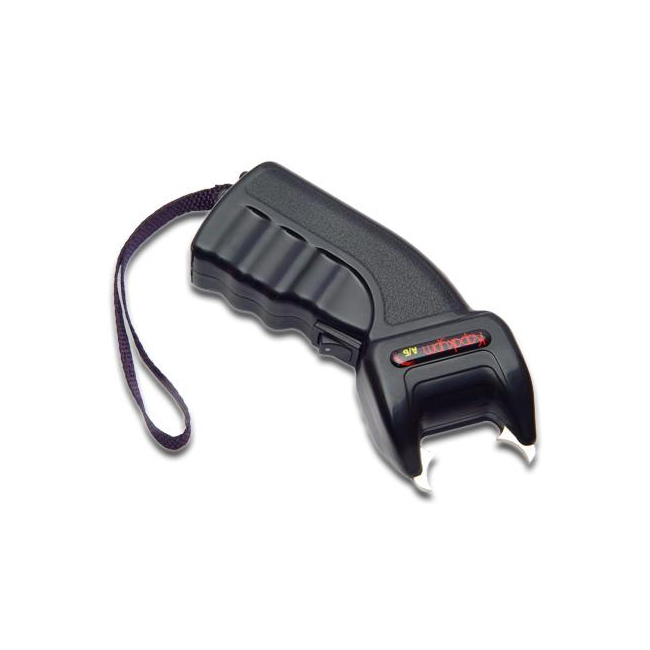
These are the simplest in design of the shockers, and they are also the most reliable. But such a device can be effectively applied only through direct contact with the attacker.
To do this, you need to force the electrodes into the body of the enemy (possibly avoiding the neck and head areas, so as not to fall under the Criminal Code article) and hold the weapon for 1-3 seconds.
Pros:
- Convenient to use in tight spaces;
- The ability to serve several discharges during the battle;
- Compact size;
- Contact shockers are often disguised as more innocuous objects and for the time being do not attract attention.
Minuses:
- If the attacker is armed or much stronger than you, you can not catch the button.
- In order for an electric shock to be effective, electrodes need to be pressed firmly into the body, and not just touch the skin.
Devices of remote-contact action (CD)
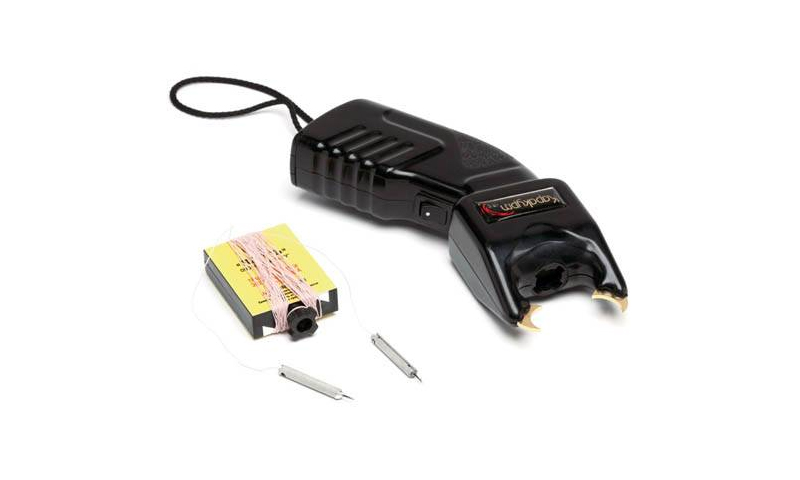
As a rule, these are quite powerful ESAs, whose characteristics correspond to the I and II efficiency classes.The sharp electrodes of the shooting models pierce a layer of clothes up to 7 cm in distance, that is, even a thick fur coat or sheepskin coat is not a hindrance for them.
When using such arresters, it is important to correctly calculate the distance, since the striking effect can be achieved only at a distance of 1–4 m from the enemy. And even if the manufacturer specifies a large number in the characteristics, you should not flatter yourself - from 4-5 meters you either miss, or the attacker has time to dodge.
Pros:
- The ability to use against an armed person, not coming close to him;
- Acts through clothing - even winter;
- Guaranteed long-term contact with the electrodes completely removes the attacker;
- Many models come with a laser sight for accurate reflection of attacks in the dark.
Minuses:
- Useless and sometimes dangerous in the cramped conditions of struggle;
- Under the conditions of the battle, they actually become disposable, because even after an unsuccessful "shot", you will have to install a new cartridge.
Also today, manufacturers offer a combined shocker - just in case of a miss from a long distance. They have an additional contact module built in that allows you to continue the battle at close range.
Taser Choice Options
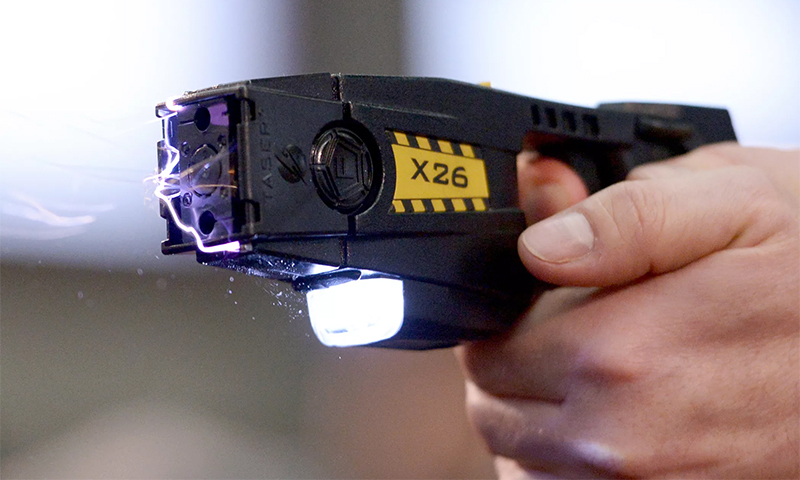
Power
This indicator is strictly regulated by standards and should not exceed 3 watts. Of course, there are more powerful devices that produce 10 watts, but these are allowed to be used only by the security forces - such equipment is not available to ordinary citizens.
According to GOST 50940-96, in terms of power, all electroshock self-defense devices are divided into 3 types:
I. This category includes devices for 2-3 watts.
Ii. "Middle" have a power of 1-2 watts.
Iii. The weakest devices, issuing 0.3-1 W at the output.
Remember that the power supply of a stun gun that has lain in a bag for a long time or at home on the shelf will gradually decrease. So that at the right moment the device does not let you down, do not spare money for a more powerful unit.
Voltage
Theoretically, the shocker can have an output voltage of 5 to 200 kilovolts, but there are also limitations. For example, spark gaps, issuing more than 90 kV, are prohibited for sale.
Depending on the voltage, the device group is also determined:
1. 70-90 kV are not cheap, but really effective devices, capable of permanently paralyzing the enemy, or even knocking him out.
2. 45-70 kV - such models are called disorienting. They will help to neutralize the bully for a short time, even if the discharge had to be served through light clothing.
3. 20-45 kV - a little sense from such devices. They do not exactly knock out the attacker, but you can easily get angry.
4. 12-20 kV - these devices should be considered only as a weapon of psychological influence.
5. Less than 12 kV - suitable only for evil draws, but not for self-defense.
When choosing a stun gun class, it is the stress indicator that is decisive - the higher it is, the more effective the weapon in combat, and a higher class is assigned to it.
Design
Here, manufacturers are actively experimenting, but it is already possible to identify a number of the most popular and convenient formats of EShU:
1. Compact - light shortened shocker, more like a flashlight or a rectangular bar with contacts on the end.
2. Cudgel - the same contact device, only longer and heavier. It allows you to hit the attacker, even at a distance of 1-1.5 m, to protect yourself from stray dogs, or even just to fight off the hooligans - in the truest sense of the word.
3. Shocker pistol - remote models have this form. Because of the similarity with this weapon in the twilight, they can be used for psychological impact on the enemy.
Also, there are shoppers in the form of brass knuckles and trinkets disguised as a tube of lipstick, a smartphone, a pack of cigarettes or even a folding umbrella.
Additional functions
In the case of spark dischargers, it is common practice to add various effects to additional options, which allow you to frighten or disorient the enemy without electric shock. However, their presence is not always justified.
For example, the flashlight, which allegedly can blind the attacker, in an emergency you can hardly remember. But a nozzle-siren or a signal cartridge accompanying the “shot” from a remote ESD with a clap and flash can seriously frighten the criminal, and will ensure the attention of others around the brawl.
Another useful feature that is found in spark gaps is an ultrasound generator that scares stray dogs. It is easier and more humane than to beat them with current.
Batteries
Replaceable batteries or a built-in battery can be used to power the shocker.
Batteries are convenient because they can be quickly and easily replaced if you carry a supply. In addition, their total capacity enough seconds for 60 filing discharge. But even if you have never used the ESD, after a year and a half it is better to put fresh elements.
The battery requires periodic recharging (once every six months or a year) or after each use. But it will take more than one hour, besides, over time, the characteristics of the battery seriously subside.
Which stun gun to choose

1. For residents of the private sector and those who often return in the dark through parks or wastelands, remote action shokers are best suited.
2. Men can choose the contact option on batteries with a flashlight. Only in this case it is desirable to acquire a baton of 1-2 classes, in order to certainly neutralize the enemy.
3. Most of all are afraid of an attack in the stairwell, gateway or elevator - choose a contact stun gun without any extra lotions. Well, if it will easily fit in your pocket. You should not chase after power either - there is enough device for 1-2 W with voltage from 50 kilovolts.
How much does a stun gun cost
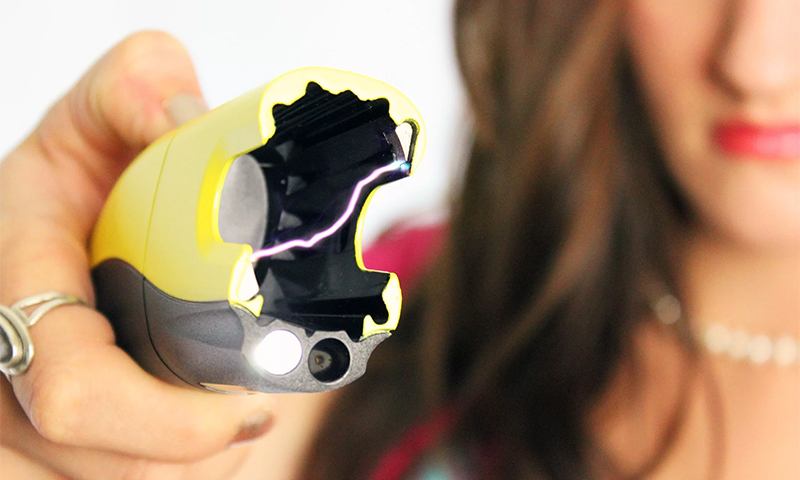
1. A small shooting shocker can be purchased for 9-15 thousand rubles.
2. "Flashlights" are cheaper - in the range of 4000-8000 rubles.
3. The remote shocker pistol will cost about 14 thousand.
4. Contact baton will cost 9-11 thousand rubles. Shooting (there are such) - a couple thousand more.
5. Weak pugalki are the cheapest - their price ranges from 800 rubles to 1.5-3 thousand.
It will be interesting to friends too

